Abstract
During the first hours of chilling, bean (Phaseolus vulgaris L., cv Mondragone) seedlings suffer severe water stress and wilt without any significant increase in leaf abscisic acid (ABA) content (P. Vernieri, A. Pardossi, F. Tognoni [1991] Aust J Plant Physiol 18: 25-35). Plants regain turgor after 30 to 40 h. We hypothesized that inability to rapidly synthesize ABA at low temperatures contributes to chilling-induced water stress and that turgor recovery after 30 to 40 h is mediated by changes in endogenous ABA content. Entire bean seedlings were subjected to long-term (up to 6 d) chilling (3°C, 0.2-0.4 kPa vapor pressure deficit, 100 μmol·m−2·s−1 photosynthetic photon flux density, continuous fluorescent light). During the first 24 h, stomata remained open, and plants rapidly wilted as leaf transpiration exceeded root water absorption. During this phase, ABA did not accumulate in leaves or in roots. After 24 h, ABA content increased in both tissues, leaf diffusion resistance increased, and plants rehydrated and regained turgor. No osmotic adjustment was associated with turgor recovery. Following turgor recovery, stomata remained closed, and ABA levels in both roots and leaves were elevated compared with controls. The application of ABA (0.1 mm) to the root system of the plants throughout exposure to 3°C prevented the chilling-induced water stress. Excised leaves fed 0.1 mm ABA via the transpiration stream had greater leaf diffusion resistance at 20 and 3°C compared with non-ABA fed controls, but the amount of ABA needed to elicit a given degree of stomatal closure was higher at 3°C compared with 20°C. These findings suggest that endogenous ABA may play a role in ameliorating plant water status during chilling.
Full text
PDF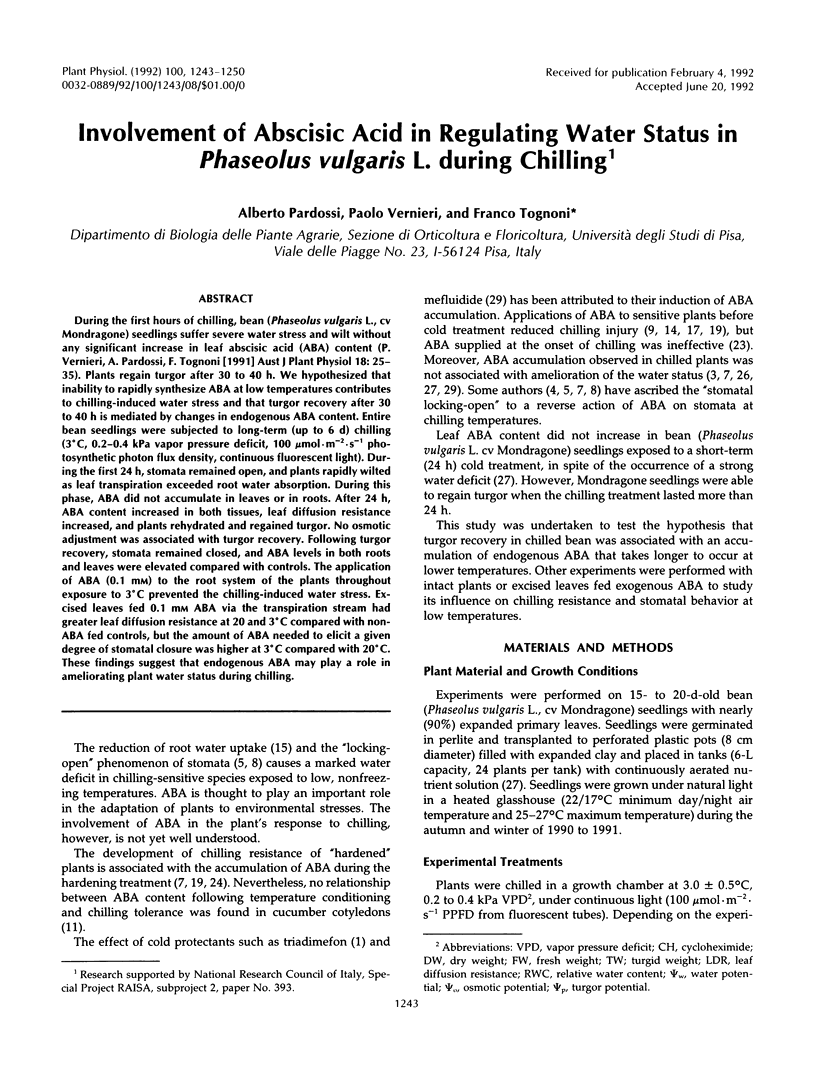
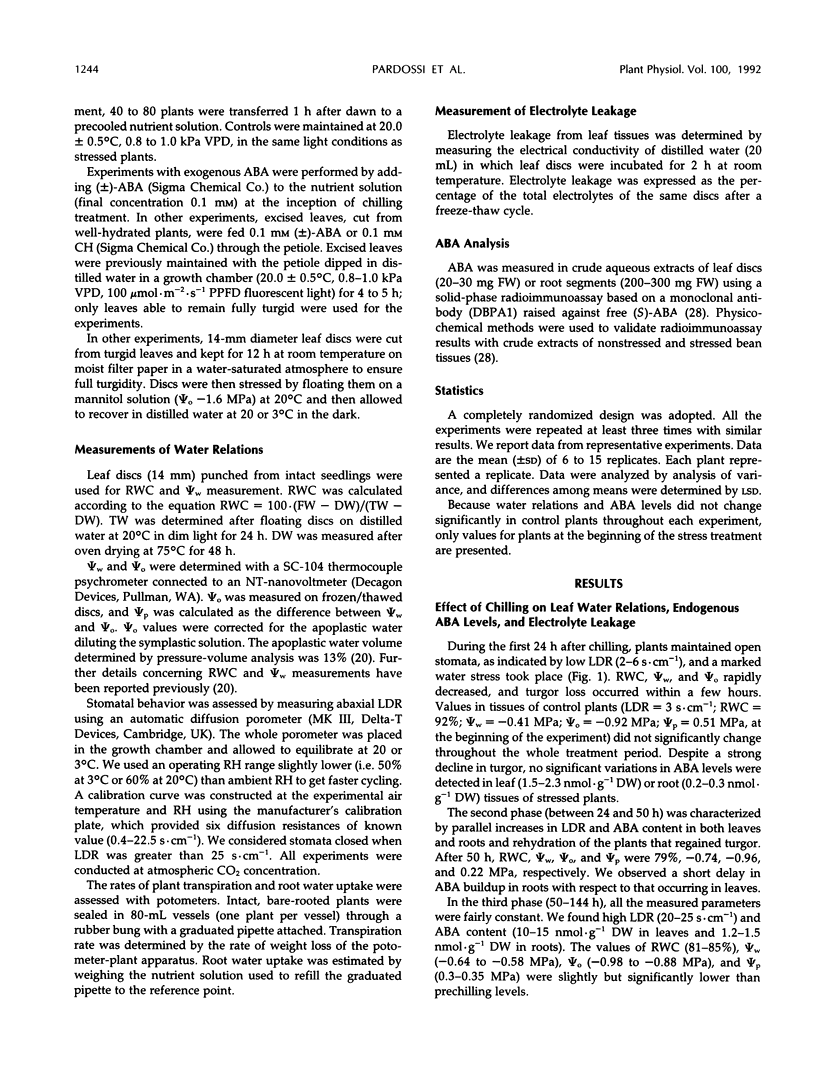
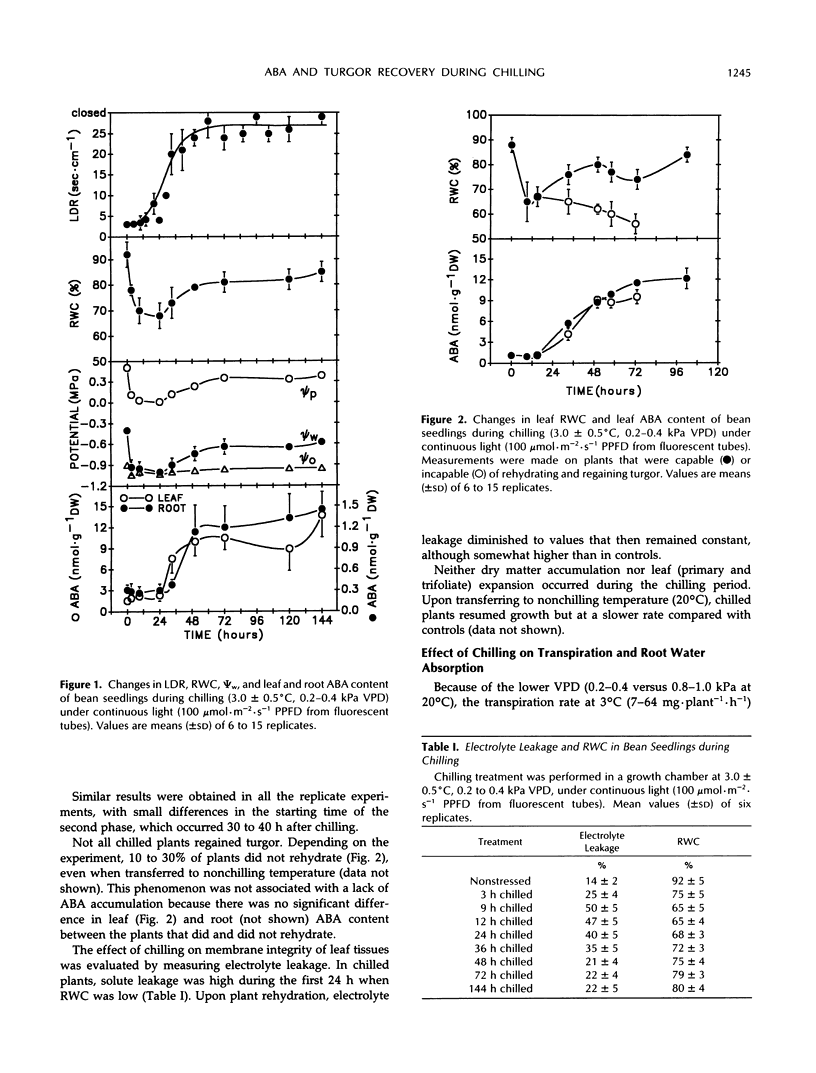
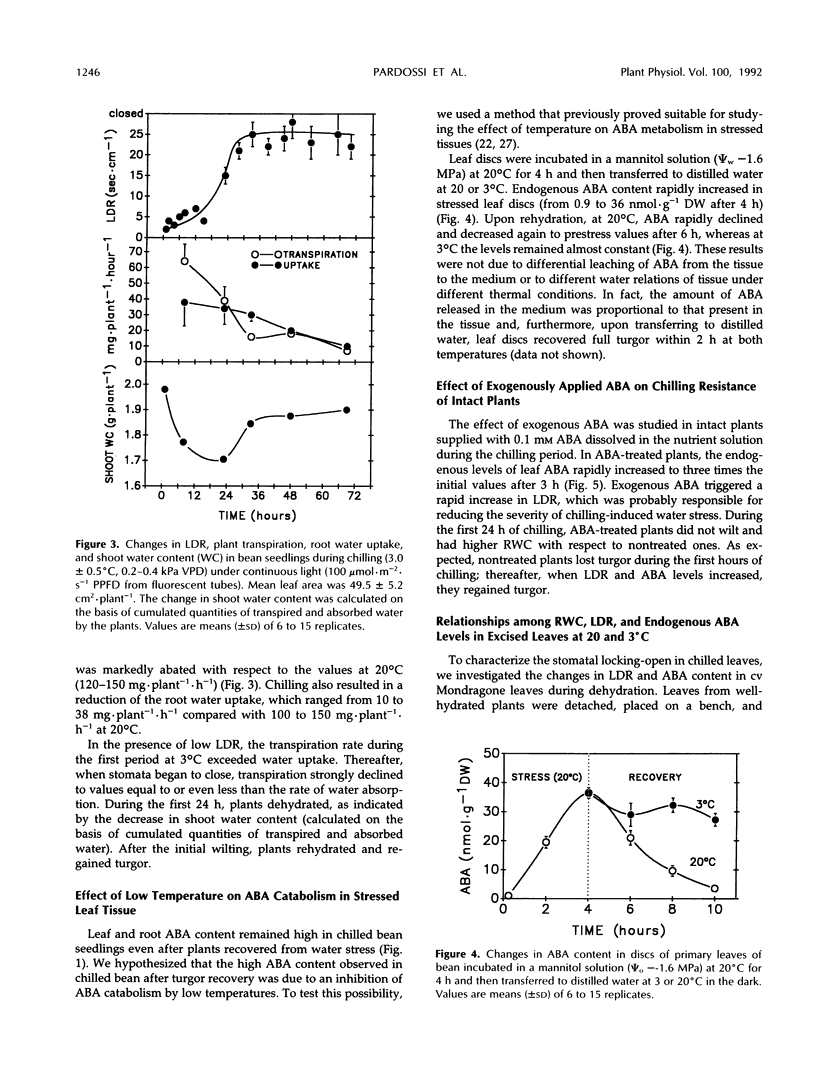
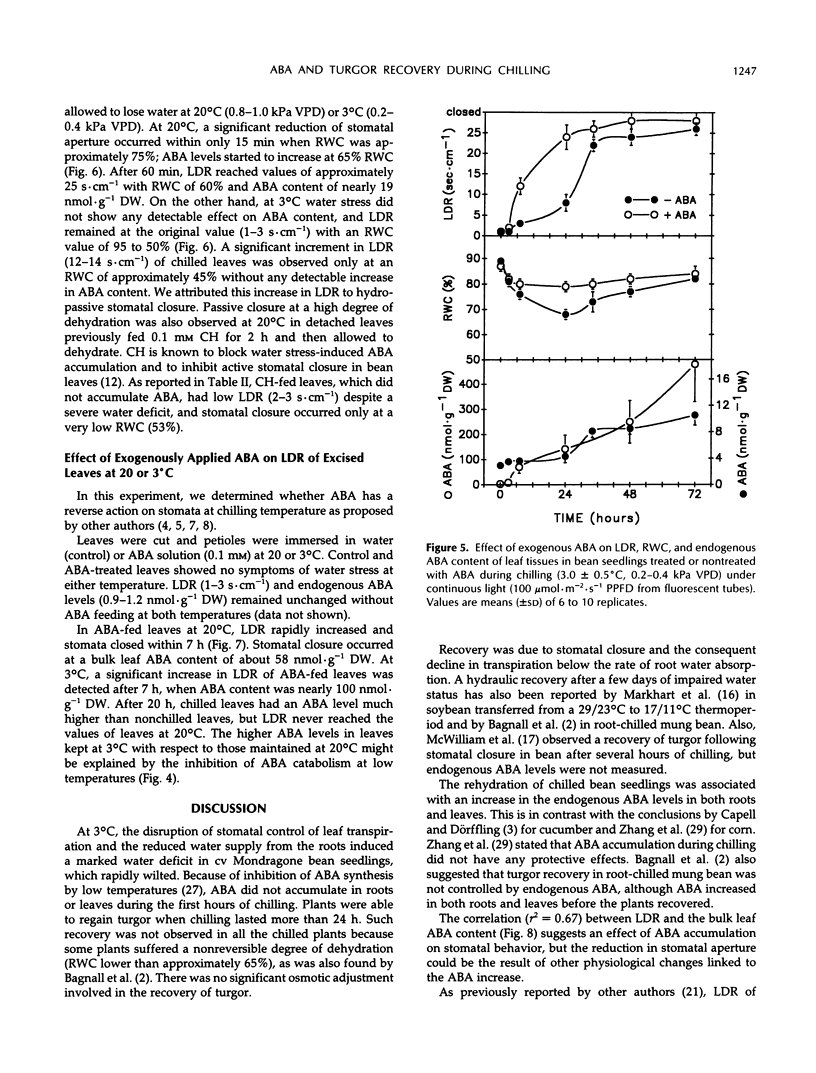
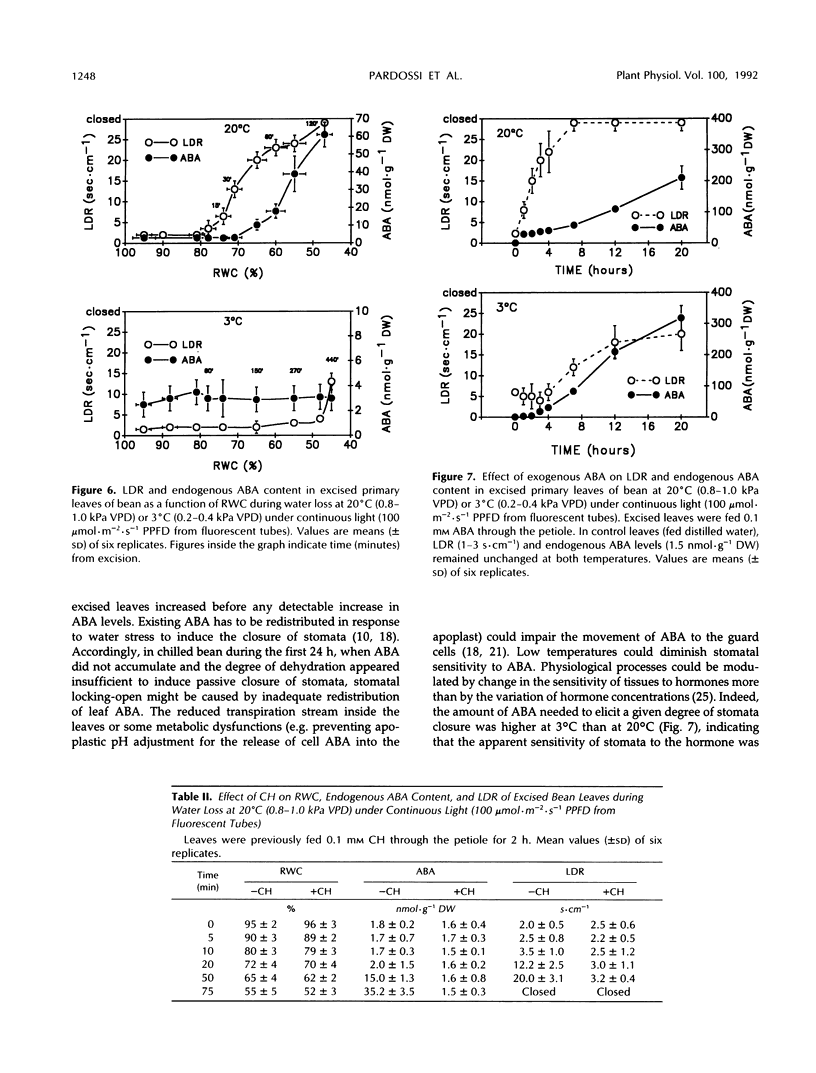
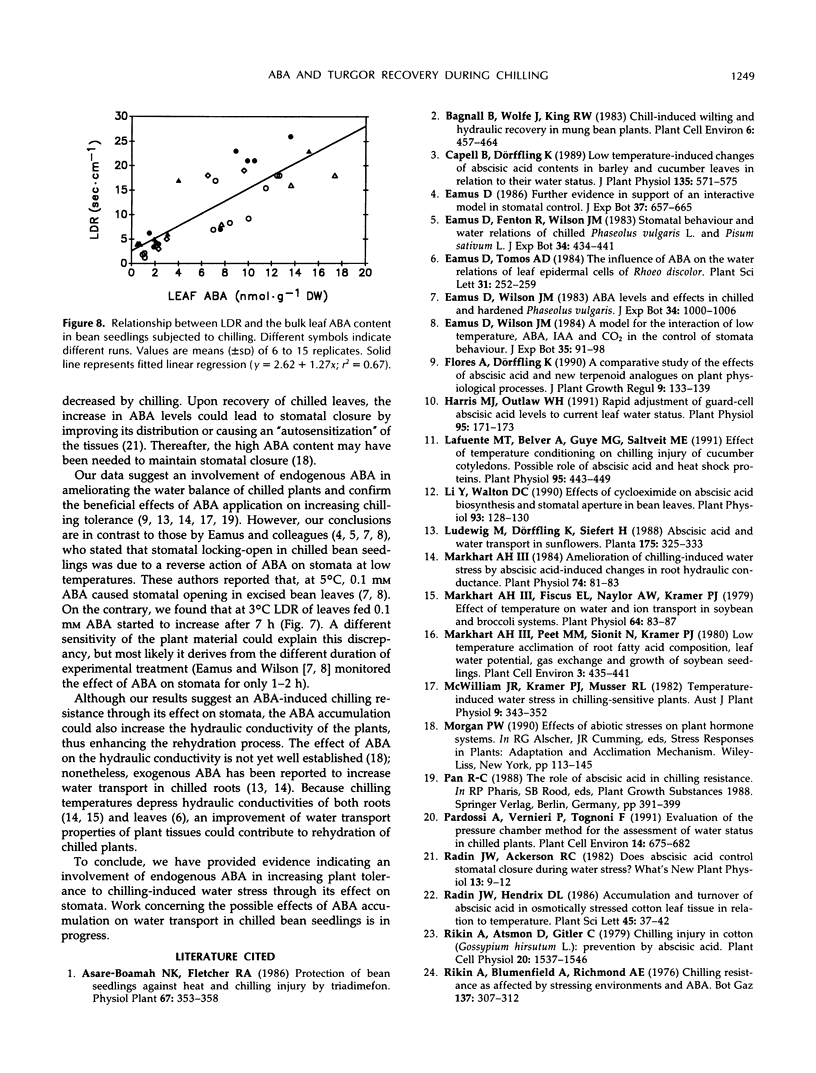

Selected References
These references are in PubMed. This may not be the complete list of references from this article.
- Harris M. J., Outlaw W. H. Rapid adjustment of guard-cell abscisic Acid levels to current leaf-water status. Plant Physiol. 1991 Jan;95(1):171–173. doi: 10.1104/pp.95.1.171. [DOI] [PMC free article] [PubMed] [Google Scholar]
- Lafuente M. T., Belver A., Guye M. G., Saltveit M. E. Effect of temperature conditioning on chilling injury of cucumber cotyledons: possible role of abscisic Acid and heat shock proteins. Plant Physiol. 1991 Feb;95(2):443–449. doi: 10.1104/pp.95.2.443. [DOI] [PMC free article] [PubMed] [Google Scholar]
- Li Y., Walton D. C. Effects of cycloheximide on abscisic Acid biosynthesis and stomatal aperture in bean leaves. Plant Physiol. 1990 May;93(1):128–130. doi: 10.1104/pp.93.1.128. [DOI] [PMC free article] [PubMed] [Google Scholar]
- Markhart A. H. Amelioration of chilling-induced water stress by abscisic Acid-induced changes in root hydraulic conductance. Plant Physiol. 1984 Jan;74(1):81–83. doi: 10.1104/pp.74.1.81. [DOI] [PMC free article] [PubMed] [Google Scholar]
- Markhart A. H., Fiscus E. L., Naylor A. W., Kramer P. J. Effect of temperature on water and ion transport in soybean and broccoli systems. Plant Physiol. 1979 Jul;64(1):83–87. doi: 10.1104/pp.64.1.83. [DOI] [PMC free article] [PubMed] [Google Scholar]
- Zhang C. L., Li P. H., Brenner M. L. Relationship between Mefluidide Treatment and Abscisic Acid Metabolism in Chilled Corn Leaves. Plant Physiol. 1986 Jun;81(2):699–701. doi: 10.1104/pp.81.2.699. [DOI] [PMC free article] [PubMed] [Google Scholar]


